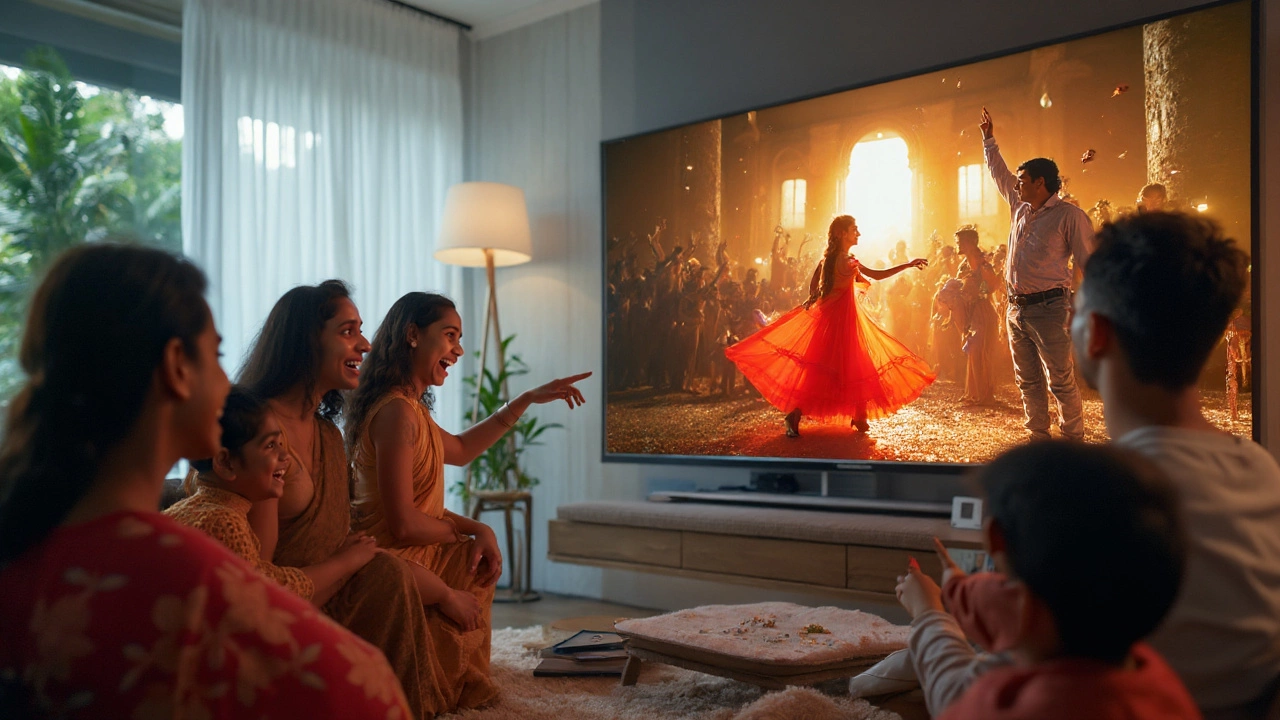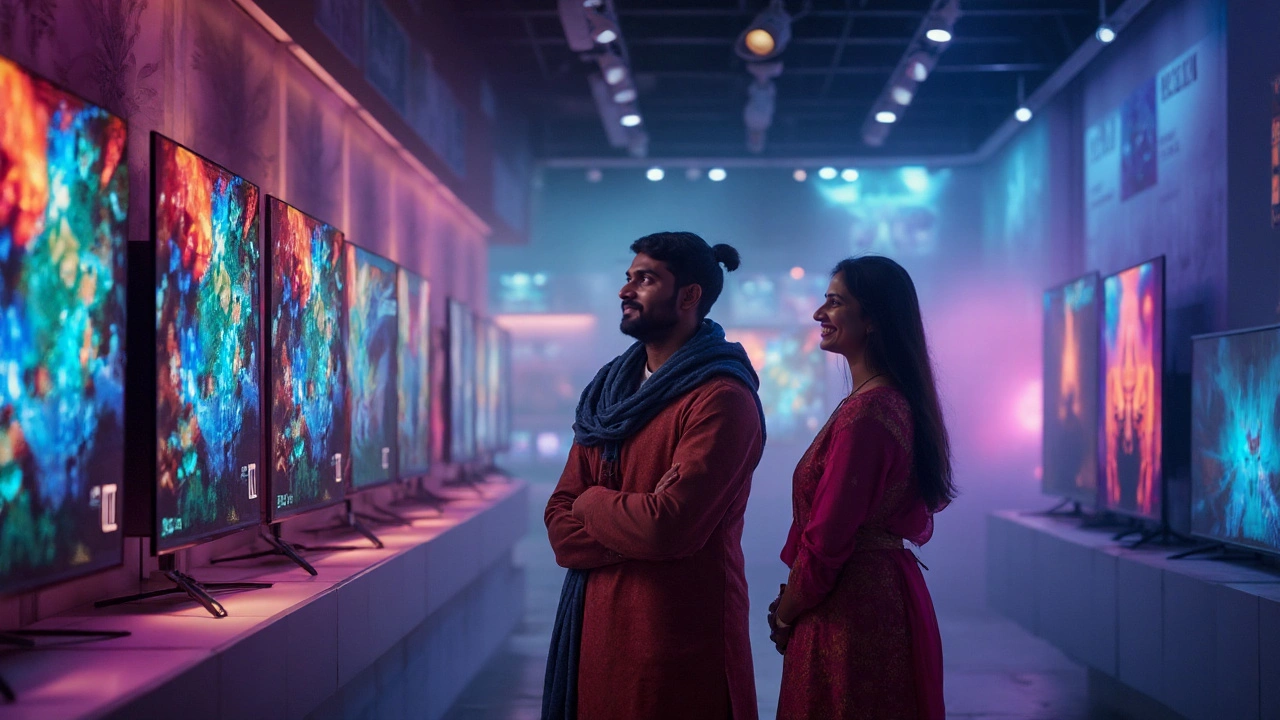
So you've finally decided that your living room deserves a better screen. But there's a snag—every electronics store and every online review throws technobabble your way. Ads shout "QLED!" and "UHD!" like magic spells. If it all feels confusing and you just want a picture that looks awesome for your movies, games, or sports, you’re not alone. Most people struggle to understand what these terms really mean and which one is actually better for you.
Let's not sugarcoat it—the world of modern TVs is a jungle of buzzwords. Some are all about resolution, others push fancy color technology. The big players (Samsung, LG, Sony, TCL, Hisense—you name it) love making their own abbreviations. So, what’s the difference when someone asks: Is UHD better than QLED, or the other way around? The twist: one is not the opposite of the other, and picking the wrong one could mean living with a screen you secretly hate. Let’s clear this up, ditch the jargon, and help you shop smarter.
Getting to Know the Basics: UHD and QLED Defined
Before making any decision, you need to know what you’re really choosing between. The TV industry throws out terms like UHD and QLED constantly, so let’s get blunt: UHD stands for Ultra High Definition, and it’s all about screen resolution. QLED, on the other hand, is about the way your TV creates colors and brightness—it's a type of screen technology, not a resolution at all.
Think of UHD as the number of tiny dots (pixels) that make up the picture. With most TVs sold today, UHD means a 4K display—about 3840 x 2160 pixels. That’s nearly four times the sharpness of good old HD. If you like counting, that adds up to more than 8 million pixels lighting up your shows, movies, and games. More pixels mean sharper images and tiny details pop out, especially on screens 50 inches or bigger.
Now for QLED. This stands for Quantum-dot Light-Emitting Diode. That’s a mouthful, but here’s what matters: QLED TVs use a layer of nanoparticles (called quantum dots) between the LED backlight and the screen. This layer helps make colors more accurate and brightness way higher than regular LED TVs. QLED is Samsung’s big thing, but you’ll see other brands use the word too (TCL, Hisense…). It means brighter whites, deeper colors, and less fading on sunny days.
To really lay it out, here’s the tricky part. You can find TVs that are just UHD, some that are UHD and QLED at the same time, and others mixing in more features. In a nutshell: UHD tells you how many pixels you get, while QLED tells you how those pixels look. These terms aren’t a “choose only one” situation—they overlap, and understanding the mashup is seriously helpful when you’re hunting for your next TV.
Picture Quality Showdown: How UHD and QLED Stack Up
If you care about getting a picture that wows you—crisp, vibrant, easy on the eyes—then this is where things get real. Let’s break down what you actually see with each tech.
With UHD (Ultra High Definition), you’re first and foremost getting resolution. Images on UHD screens look a lot cleaner than they do on regular HD. Little details, like blades of grass in a soccer match or tiny wrinkles on a movie star’s face, jump out. If you stream 4K content from Netflix or play on a modern gaming console, UHD lets all those details explode off the screen. But here’s the catch: content matters. Watching your old DVD collection or random cable channels? They’re not full 4K UHD, so the TV has to "upscale" the image. This works, but it’s not magic. True 4K content looks loads better than upscaled old stuff.
Now, QLED is all about making those pixels come alive. These TVs are brilliant when it comes to brightness and color. With QLED, HDR (High Dynamic Range) actually looks like something—deep, punchy reds, a wider range of greens, and more natural blues. What’s even nicer: they handle bright rooms like champions. Having a sunny living room is no longer a death sentence for your TV picture. Many QLED TVs reach up to 2,000 nits of brightness (a ‘nit’ is a brightness unit), making them perfect for daytime sports viewing or gaming marathons without squinting.
You might be wondering—does QLED mean perfect black levels? Not quite. OLED TVs still rule there, since they turn off pixels entirely for true blacks. But QLED has gotten closer every year by using things like "full-array local dimming." That means blacker blacks, without the washed-out look you used to see on cheaper LED models.
Let’s compare UHD and QLED TVs in some easy numbers. Based on data from manufacturer websites and review sites in 2025, here’s a quick cheat sheet:
| Feature | Standard UHD TV | QLED UHD TV |
|---|---|---|
| Resolution | 4K (3840 x 2160) | 4K (3840 x 2160) |
| Brightness (Typical) | 350-500 nits | 1,000-2,000 nits |
| Color Volume | Good | Excellent (over 100% DCI-P3) |
| HDR Capability | Basic to Moderate | Excellent (HDR10+) |
| Black Levels | Basic to Moderate | Good (w/Local Dimming) |
| Viewing Angles | Limited | Moderate |
The takeaway: if your number-one priority is a screen that’s more vivid, punchier, and easy to watch in daylight, QLED is the tech to chase. If you’re tight on budget but want sharp pictures (especially for gaming or movies), UHD is still a solid pick. And remember: QLED TVs are still UHD—just with upgraded technology layered on top.

TV Shopping in 2025: What Features Matter Most?
Now you know the difference between UHD and QLED. Next question—what else should you watch out for when buying a new TV, especially this year? It’s easy to get lost in specs, but some features actually change your daily viewing experience.
Size comes first. Bigger is usually better, but only if you have the room. The old "sit twice the screen size" rule went out the window with 4K. You can sit much closer without noticing pixels, so a 65-inch TV is fantastic even in an average living room. Measure before you shop; don’t eyeball it.
Smart features. If you stream Netflix, Disney+, or YouTube, you want a TV that makes it easy. Most UHD and QLED TVs are Smart TVs—meaning built-in Wi-Fi, app stores, and even voice controls. In 2025, voice assistants (like Alexa or Google Assistant) are almost standard. Look for fast menu navigation; laggy or locked-down smart menus suck every time.
Ports. It sounds silly, but it’s not: Count your HDMI ports. New gaming consoles, streaming boxes, soundbars… it adds up fast. HDMI 2.1 support is great for gamers—allows higher frame rates (up to 120Hz), smoother motion, and Variable Refresh Rate (VRR) support. USB ports help too, if you want to plug in drives or accessories.
Gaming features. If you care about PlayStation 5 or Xbox Series X, look for QLED and UHD TVs with low input lag (under 20ms is good), ALLM (Auto Low Latency Mode), and that HDMI 2.1 support mentioned above. Don't forget—brand doesn’t always mean best for gaming. Check reviews or even test it at a store if possible.
Design. Almost all new TVs are thin slabs, but pay attention to the stand (does it fit your furniture?) and the remote (is it easy to use?). Wall-mounting is huge for big screens, so check weight and VESA compatibility before you order that mount off Amazon.
Warranty and support. TVs are more reliable than a decade ago, but it stings hard if something goes wrong. Look for brands that offer at least a one-year warranty and have decent customer service in your country.
Energy use. QLEDs tend to be brighter, so they can use more power when cranked up (around 200–350W for top QLED models, compared to 100–200W for basic UHD models). If you want to keep electric bills down, look for Energy Star certification, and remember to dim the screen a bit if you don’t need max brightness all the time.
Some real-world tips: Don’t obsess over "quantum" gimmicks—see the screen for yourself. Colors pop more on QLED, but you might not notice a big difference unless you watch side-by-side. If possible, bring a USB stick with a familiar 4K clip (lots of electronics shops let you do this). Watch for motion handling too—sports and fast games can blur on cheaper models.
Making the Final Choice: Which Is Better for You?
Here’s where it all comes together. If you’re mostly watching in the evening, streaming movies, or catching up on your favorite shows, a basic UHD TV won’t disappoint. Prices are dropping every year, especially on trusted brands like TCL, Samsung, and LG. If you want "good enough" and your room always stays dark, you won’t miss much by skipping the fancy label.
But if you crave more brightness, jaw-dropping color, and a screen that works under all lighting, QLED is honestly hard to beat unless you’re splurging for OLED. It’s built for rooms where the sun never agrees to go away, and for summer afternoons filled with live sports or gaming with friends over. The fact that QLED models are still UHD (offering 4K resolution) makes the pick even simpler: you’re not sacrificing sharpness for color anymore.
Let’s talk about price. In 2025, entry-level 55-inch UHD TVs with basic features can run you as low as $300, while a QLED 55-inch with advanced brightness, better HDR, and more smart features usually starts around $600–$800. The gap narrows every year, though, so always shop deals, especially during big sales seasons (think Black Friday, or back-to-school promos).
Here’s an insider nugget—don’t chase meaningless specs like “2000Hz refresh” or “SuperMega UHD.” Ignore marketing fluff. Ask salespeople about real panel refresh rates, smart features updates, and how long warranty support lasts. Bring your own content to test, and trust your eyes. Screens are personal. The best TV is the one that makes you forget you’re looking at a screen at all.
If you want my bet for 2025? QLED UHD TVs are the sweet spot for most buyers—striking the best balance of performance, price, and future-proofing for the next few years. But don’t sweat it if UHD is where your budget lands. With the right content and setup, you’re in for a treat either way. Enjoy the binge-watching—your couch will thank you.